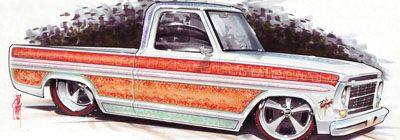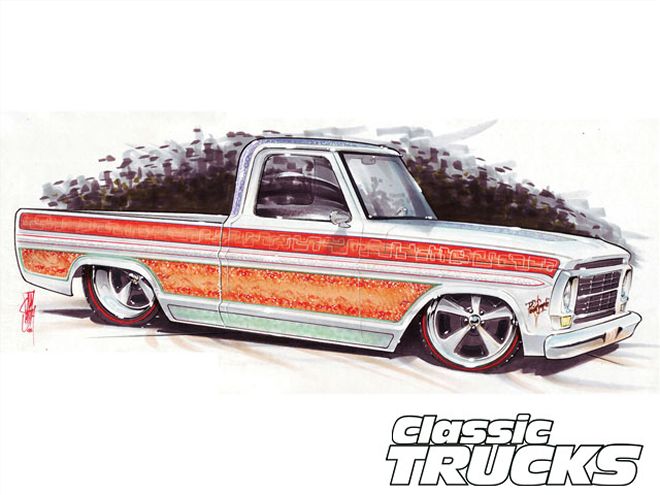

In every classic truck builder's life there comes a point when you are faced with rust and what to do about it. It's probably the most common and most troublesome-not to mention expensive-problem we all have to deal with. There are basically three solutions to the situation: 1) Leave it and keep driving, 2) Pay someone to cut it out and fix it, or 3) Fix it yourself. All of the three answers have their pros and cons, all of which revolve around your budget, time, skill, and resources, or lack of any or all of these things.
If you are anything like myself, you like to do things on your own and don't like other people working on your "baby," which just so happens to work out well since I don't have the money to spend on a $50-plus hourly shop rate for a tedious job such as rust removal. Well, having been in this same situation since I learned to drive, I quickly jumped in and really gave fabrication the old college try. If I did manage to mess things up, at least it wouldn't cost me much, and I'd still learn something. And in the event that I was successful, I could smile and put another notch in my body hammer.
Tools aren't everything, but having the right stuff saves time and can help make the work that much tidier. Air tools are quick and easy to work with and more compact than their electric counterparts, but, of course, you need an air compressor that'll keep up without running continuously. You don't need to break the bank when it comes to buying air tools, and you really only need two or three different tools to get started, but remember that you will most likely get what you pay for, and if you think you'll be using them often, don't buy cheap ones! Even though Snap-on helps sponsor the Primedia Tech Center, I've always used Snap-on's air tools, which have withstood all the rigors of daily use in the shops I've worked at in the past before coming to work here at Classic Trucks.
Welding may be the albatross that hangs over the heads of many reading this, but all it takes is practice and patience. Patience is the number one key in any metal fabrication job, as it is with most things, but the end result of the project will turn out much better if it's not rushed. Both MIG and TIG welders have come down in price in the last 10 years and have gotten much more advanced at the same time, which is great news for those thinking about taking the plunge. I think it's safe to say you could easily get a nice MIG welder from a company like Miller and set it up with shielding gas, wire, welding helmet, gloves, basically everything you'd need to plug it in and pull the trigger for less than what a reputable shop would charge to fix the rust in the floor I'm about to show you. Read on and stay tuned for an in-depth DIY welding story in an upcoming issue of Classic Trucks.
After I dismantled and had the '68 F-100 soda-blasted (Nov. '07 CT), I found rust in the floorboards hiding under the rubber floor mat, which wasn't noticeable from underneath with the truck on a lift-so much for thinking it was rust-free! I flipped open my National Parts Depot (NPD) 1948-79 Ford truck catalog, found the patch panels I needed, and got on the phone to order 'em. Even though there aren't as many new parts available for '67-72 Ford Bumpside trucks as there are for C-10s of the same vintage, NPD makes an effort to carry everything they can get their hands on, so order a catalog or go online and check them out. If you're not welding and grinding yet, get ready to face your fears and fabricate!